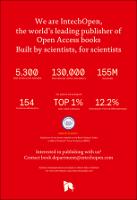Chapter Polystyrene as Hazardous Household Waste
| dc.contributor.author | Shaw, Ian C. | |
| dc.contributor.author | Farrelly, Trisia | |
| dc.date.accessioned | 2021-06-02T10:09:43Z | |
| dc.date.available | 2021-06-02T10:09:43Z | |
| dc.date.issued | 2017 | |
| dc.identifier | ONIX_20210602_10.5772/65865_332 | |
| dc.identifier.uri | https://library.oapen.org/handle/20.500.12657/49218 | |
| dc.description.abstract | During the Humanitarian‐demining actions, teleoperation of sensors or multi‐sensor heads can enhance-detection process by allowing more precise scanning, which is useful for the optimization of the signal processing algorithms. This chapter summarizes the technologies and experiences developed during 16 years through national and/or European‐funded projects, illustrated by some contributions of our own laboratory, located at the Royal Military Academy of Brussels, focusing on the detection of unexploded devices and the implementation of mobile robotics systems on minefields. | |
| dc.language | English | |
| dc.subject.classification | bic Book Industry Communication::R Earth sciences, geography, environment, planning::RG Geography::RGW Geographical information systems (GIS) & remote sensing | |
| dc.subject.other | robotics, demining, navigation, sensors, image processing | |
| dc.title | Chapter Polystyrene as Hazardous Household Waste | |
| dc.type | chapter | |
| oapen.identifier.doi | 10.5772/65865 | |
| oapen.relation.isPublishedBy | 09f6769d-48ed-467d-b150-4cf2680656a1 | |
| oapen.relation.isFundedBy | FP7-HEALTH-2007-A | |
| oapen.grant.number | 201607 | |
| oapen.grant.acronym | RNAFLU |

